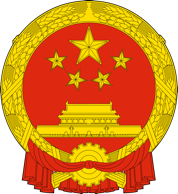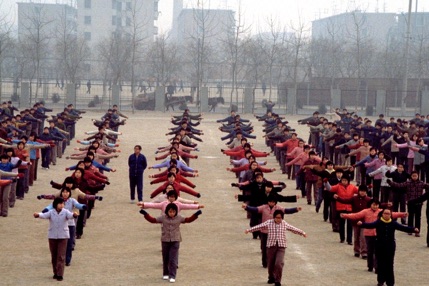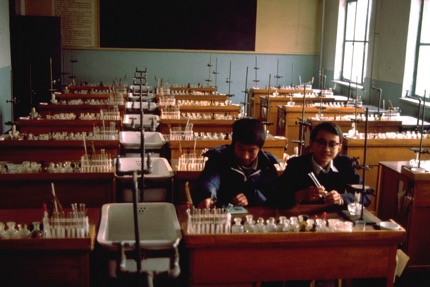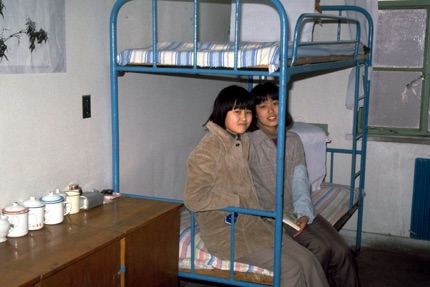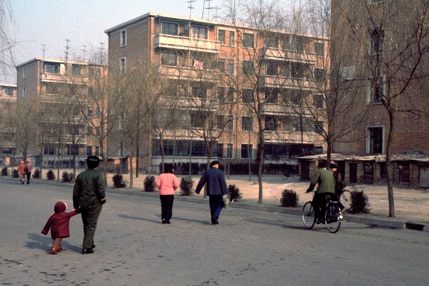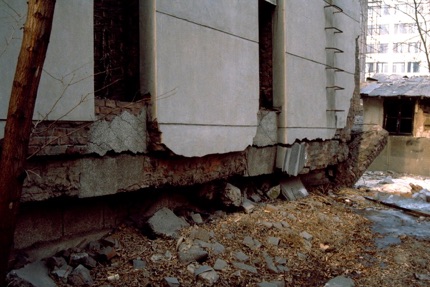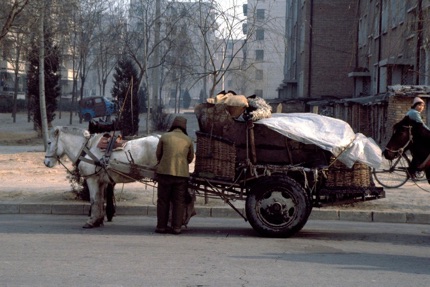China 1985

Kyrgyzstan and Tajikistan 2018

Our day in Tangshan was as memorable as our reception the night before. The morning was very foggy as we drove up to Tangshan No.1 Middle School, my teaching colleagues in the chauffer driven Datsun from the Ministry, and the rest of us in a very cosy Mitsubishi minibus. The school had prepared a special welcoming banner for us, all the VIPs from the previous evening were present again to welcome us together with a large contingent of students, and two of the Tangshan students videotaped our arrival and activities.
After a welcoming reception, the students were split into two groups. One group visited a class of Chinese language (where they became engaged in informal conversations) while the others joined an English class, taken by the enthusiastic and very competent Mr Liang Shu-chang. The English class was studying a passage about Albert Einstein (even language lessons in China teach political lessons, this one being related to Science and Technology, one of China’s Four Modernisations priorities, plus some comments on the persecution of Einstein due to his Jewish origins). A substantial part of the lesson involved reading paragraphs aloud, and the Chinese students burst into applause at our students’ “native” accents when it came to their turns.
Following the lessons, we were shown around the school by the staff and English language students, who were eager to practise their English – at one stage I had three guides at once. We were shown the science laboratories, staff rooms, library, headmaster’s office (very small, but with a bed for late night work at school), the student dormitories (85% of students board Monday to Friday to assist their study patterns), kitchen and students’ dining hall. We then proceeded outside to watch the whole school perform their morning exercises before retiring once again to the reception room for more food and an exchange of gifts and musical items. The hospitality displayed by the school was extraordinary, matched in my life perhaps only by Mr Ding’s reception in his home in Shanghai several days previously.
From the school we travelled to the nearby Mining and Metallurgical Institute to see the library which was destroyed in the 1976 earthquake. The building was only a year old at the time of the earthquake, and we saw how the foundations had shifted horizontally half a metre, and how several floors had collapsed on top of each other. The library is one of seven earthquake ruins preserved from 1976. Our guide in Tangshan, Zhang Yunxing, spoke feelingly if mechanically about her own experience of living through the earthquake:
-
“I was very lucky to survive the earthquake. I think I survived because I was living in a very small, old-style house. They were built more strongly than the tall high-rise flats.
-
When the earthquake struck, I woke up immediately. At first, I thought that Tangshan had been attacked by the Russians with bombs. The government had been telling us for several years that the Russians might attack, and that we must be on guard. I thought that this was the beginning of a war.
-
My first thought was for the safety of my mother. She was an old lady who lived in a high-rise flat on the other side of the town. I went outside, but I could not see very much as it was still dark. There was rubble everywhere. I had only walked a few metres from my home when I became completely lost, even though I have lived in Tangshan all my life! I could not find my way through the damaged streets and buildings.
-
I just sat down and cried. But then I heard calls for help and I forgot all about my own predicament. I joined in with some soldiers from the People’s Liberation Army and some men of the People’s Militia and tried to uncover injured people from the collapsed buildings. I started digging wherever I heard a voice. I thought only of Chairman Mao’s love for the Chinese people and his command to us – “Serve the People!”. I worked for two, or maybe three days, without sleeping – I can’t remember exactly. Sadly, I never saw my mother again.”
Tangshan is famous for its earthquake, its porcelain and its coal mining. Fortunately, we saw only the ruins of the first and distant views of the third. However, after lunch, we visited the exhibition hall and sales centre of the porcelain factory, viewing many exquisite examples of hand crafted and machine-made works. Then, after short trip to the railway station, past some of the small brick temporary buildings erected after the earthquake, we were farewelled by the VIPs again on the platform, with lots more speeches, smiles, hand shaking and clapping, much to the interest of the other train travellers who gathered around us on the platform.
The return journey to Beijing was uneventful (and the boxed dinner was particularly so; consisting of 12 strips of dry ham, 12 dry biscuits and 2 mandarins). A surprisingly large Chinese style cemetery which followed the railway line for several kilometres was the main feature of interest in the twilight. Our return to the anonymity and bureaucracy of the capital after the experience of “small town” Tangshan (population two million) was something of an anti-climax.
We returned to the same hotel (Hua Du) where we noticed that now, three days before Christmas, they had put up irreligious Christmas decorations of santas and reindeer (but the only Christmas decorations we saw in China), presumably to please the group tourists.

Day 19
Tangshan to Beijing
Saturday, 21 December 1985
